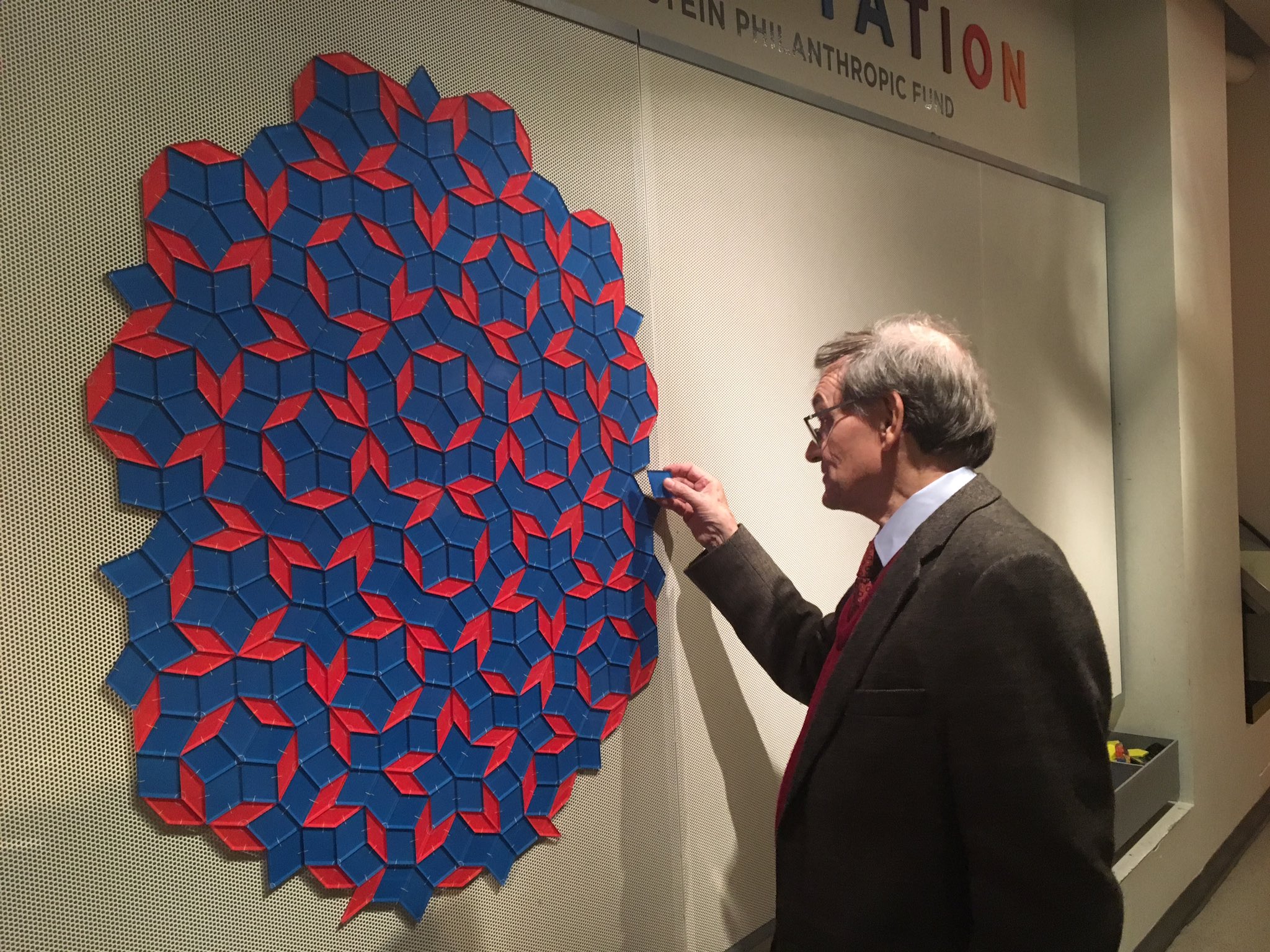Famous mathematician with his impossible ladder: Who is Roger Penrose?
One of the winners of the 2020 Physics Nobel Prize is Sir Roger Penrose, whom we know with his Penrose patterns. Let's get to know the 89-year-old scientist, who has important work in both physics and mathematics, a little closer.

The Penrose ladder or impossible staircase is an impossible object created by Lionel Penrose and his son Roger Penrose. The staircase-shaped variation of the Penrose triangle is accepted. In this illusion, a staircase that ascends (or descends) with 90-degree turns is depicted in 2 dimensions.
When a person is imagined climbing these stairs, the result is an endless cycle where there is no rise or fall but always returns to where it started. This staircase, which is clearly impossible in three-dimensional space, is called the Penrose staircase.
Sir Roger Penrose (born 8 August 1931) is a British mathematical physicist, mathematician, and philosopher of science. He is an Honorary Professor of Mathematics at the Institute of Mathematics at the University of Oxford and is also an Honorary Fellow of Wadham College.
Penrose is known for his work in mathematical physics; He has received many awards, especially for his contributions to general relativity and cosmology. These include the Wolf Physics Prize, which he shared with Stephen Hawking in 1988 for his contributions to the understanding of the universe.
Sir Roger Penrose (born 8 August 1931) is an English mathematician, mathematical physicist, philosopher of science and Nobel Laureate in Physics. He is Emeritus Rouse Ball Professor of Mathematics in the University of Oxford, an emeritus fellow of Wadham College, Oxford, and an honorary fellow of St John's College, Cambridge, and University College London.
One of the winners of the 2020 Physics Nobel Prize is Sir Roger Penrose, whom we know with his Penrose patterns. Let's get to know the 89-year-old scientist, who has important work in both physics and mathematics, a little closer.
Roger Penrose was born in 1931 in Essex, England. He comes from a highly educated family: His mother is a doctor and his father is a lecturer who researches the relationship between genetics and psychiatry. Roger and his siblings also follow in their family's footsteps and advance in the academic field. His siblings, Oliver, are physicists and mathematicians, and Shirley is a geneticist; Jonathan pursues the field of psychology (Jonathan is also known for his achievements in chess: he won the UK championship 10 times between 1958 and 1969).
Penrose has been interested in geometry since his childhood and started making prisms at the age of 10. He started his education in Canada during the Second World War and continued at University College School in London after the war ended in 1945. He is expected to follow his parents' footsteps and study medicine, but when he has to choose between biology and mathematics courses in his final years of high school, he cannot afford to give up mathematics.
After high school, he chose University College London, where he had the right to study free of charge because his father worked there as a lecturer. Afterward, he moved to Cambridge for his doctorate. During his doctorate in algebra and geometry, he became interested in physics and attended Bondi's general relativity lectures and Dirac's quantum mechanics lectures. (One of the important works he will do in the future is the twister theory he developed to combine these two fields).
After his doctorate, he studied at various universities, including Princeton and Birkbeck College in London. In addition to his mathematical studies, he also focuses on the field of cosmology and applies his research on topology to this field, providing mathematical proof that the formation of black holes is inevitable under certain conditions. This work, which he developed together with Stephen Hawking, earned him the Wolf and Nobel Prizes. In 1973, he started working as a Rouse-Boll Professor at Oxford and continued there until he retired with the title of Emeritus 25 years later. Penrose, who is also interested in philosophy, writes popular books on science and philosophy. His various contributions to science earned him the title of knight in 1996.
Among Penrose's important works, we can also count the patterns named after him.
